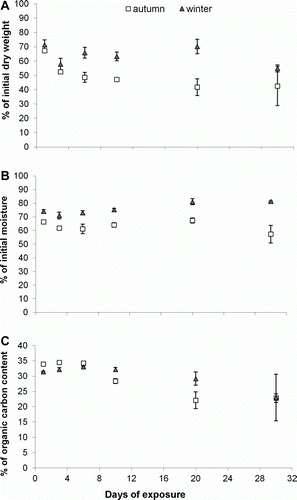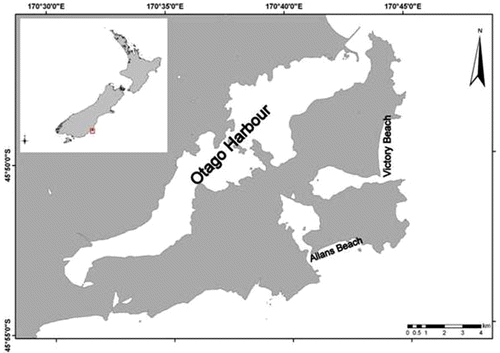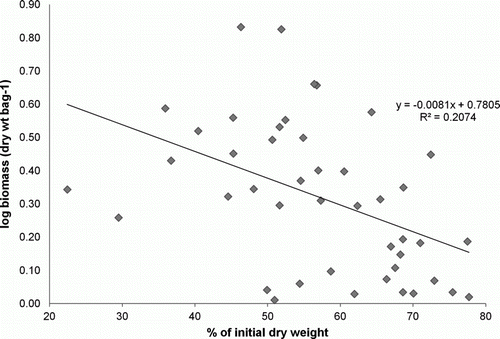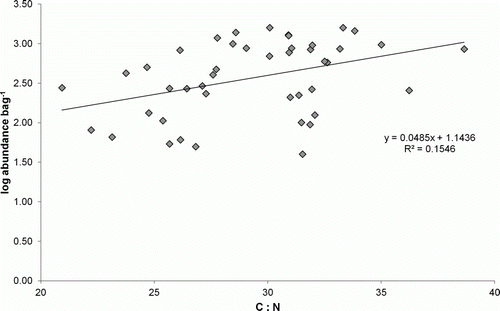Figures & data
Figure 2 Study design showing the four sampling areas (A–D) along Victory Beach. Each area was separated by at least 100 m. Within each area, six mesh bags were placed at 4-m intervals along a 20-m transect. On sampling days 1, 3, 6, 10, 20 and 30, a bag was randomly selected from each sampling area and removed from the study site.
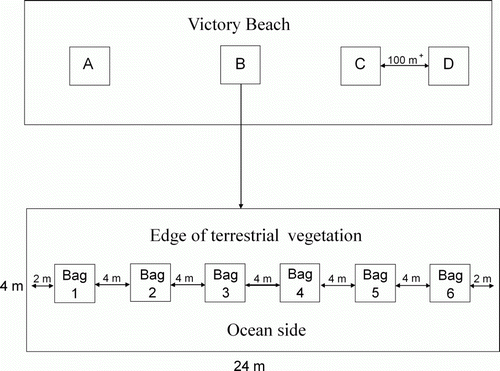
Table 1 Total abundance (number and % of total community) and biomass (dry weight (g) and % of total community) of individual taxonomic groups associated with samples of Durvillaea antarctica on Victory Beach, Otago Peninsula
Figure 3 Mean number (±SE) of A, Amphipoda, B, Staphylinidae, C, other Coleoptera and D, Diptera (per kelp sample) over a period of 30 days during autumn (day 1–20, n=4; day 30, n=3) and winter (day 1–10, n=4; day 20, n=3; day 30, n=2) 2008, on Victory Beach. Significant differences between sampling days are denoted by dissimilar letters
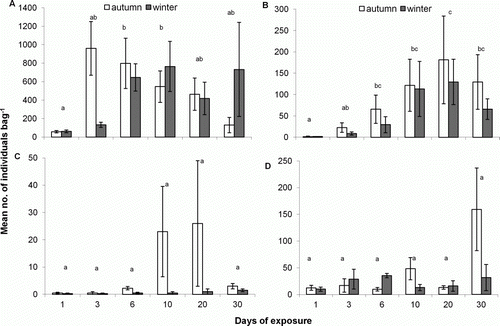
Figure 4 Mean biomass (g) (±SE) of A, Amphipoda, B, Staphylinidae, C, other Coleoptera and D, Diptera (per kelp sample) over a period of 30 days during autumn (day 1–20, n=4; day 30, n=3) and winter (day 1–10, n=4; day 20, n=3; day 30, n=2) 2008, on Victory Beach. Significant differences between sampling days are denoted by dissimilar letters
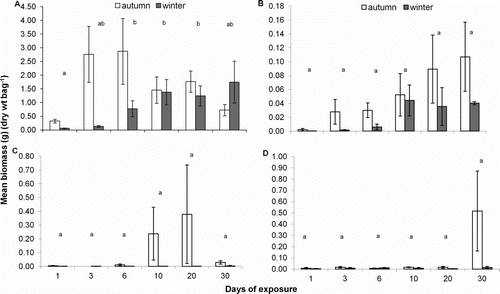
Figure 5 Percentage (%) (±SE) of A, initial dry weight; B, initial moisture; and C, carbon content over a period of 30 days in autumn (day 1–20: n=4, day 30: n=3) and winter (day 1–10: n=4, day 20: n=3, day 30: n=2) on Victory Beach, on the Otago Peninsula.
